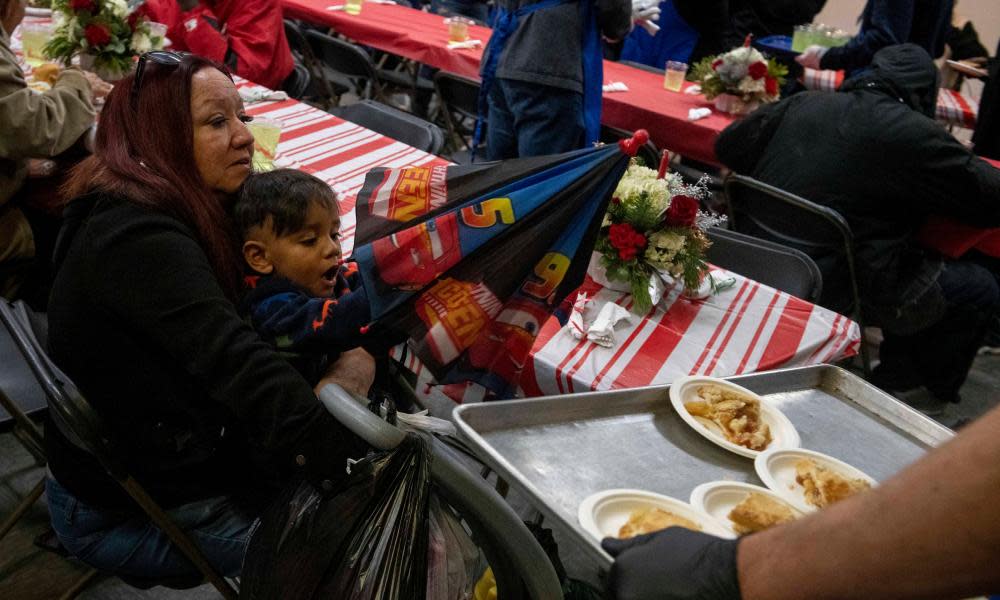US homeless student population reaches 1.5m, the highest in a decade

The number of public school students experiencing homelessness in the US has increased 15% in the past three years, reaching its highest number in more than a decade.
More than 1.5 million students reported experiencing homelessness during the 2017-18 school year, according to a study by the National Center for Homeless Education, with California at the forefront with 263,000 students.
The 2017-18 number was the highest number that the NCHE has reported since it began tracking this data in 2004, George Hancock, the center director, told the Guardian. “We’re seeing it throughout the country,” he said.
Related: ‘They’ve turned their backs on us’: California's homeless crisis grows in numbers and violence
The majority of homeless students, whose ages range from pre-kindergarten at age 3 to grade 12 at age 18 or older, reported that they were forced to stay with friends or relatives due to loss of their primary housing or economic hardship. More than 182,000 students reported living in shelters, transitional housing or were awaiting foster care – a 2% decrease from previous years.
However, the number of students living in unsheltered situations, such as on the streets, spiked by 137% to more than 102,000 in the past three years.
The new homeless student count reflects a much more serious uptick in the homeless population than that of the US Department of Housing and Urban and Development’s 2019 point-in-time estimates, which adheres to a different definition of what constitutes homelessness. The 2019 annual homeless assessment reported that the homeless population increased nationwide by 3% to more than 567,000, with more than 107,000 under the age of 18.
Experts theorize that factors ranging from housing costs to natural disasters are behind the nationwide growth. The students that qualify as unaccompanied homeless youth make up 8.6% of the total count, meaning the majority of homeless students are homeless with their families.
Housing instability can severely affect a child’s development and ability to learn. During this school year, the study found that only about 29% of students experiencing homelessness achieved academic proficiency in reading, roughly 24% achieved proficiency in mathematics and fewer than 26% achieved proficiency in science.
“What’s difficult for students that are facing homelessness is that everything is so up-in-the-air,” Hancock said. “When you think about what kind of things a student needs to succeed, those kind of stabilizing features are not available to the typical family facing homelessness and it has a direct impact on a student’s ability to perform in a classroom.”
Another challenge for homeless students is focusing on their studies while also coping with the trauma of homelessness, Hancock said. Social workers and local liaisons are working on a local level to not just identify those experiencing homelessness, but providing them the right support when they do. “A part of our work is trying to provide some technical assistance to make sure more folks know how to address trauma and that teachers, principals are trained in how to respond when families are experiencing that kind of trauma and experiencing homelessness,” he said.

